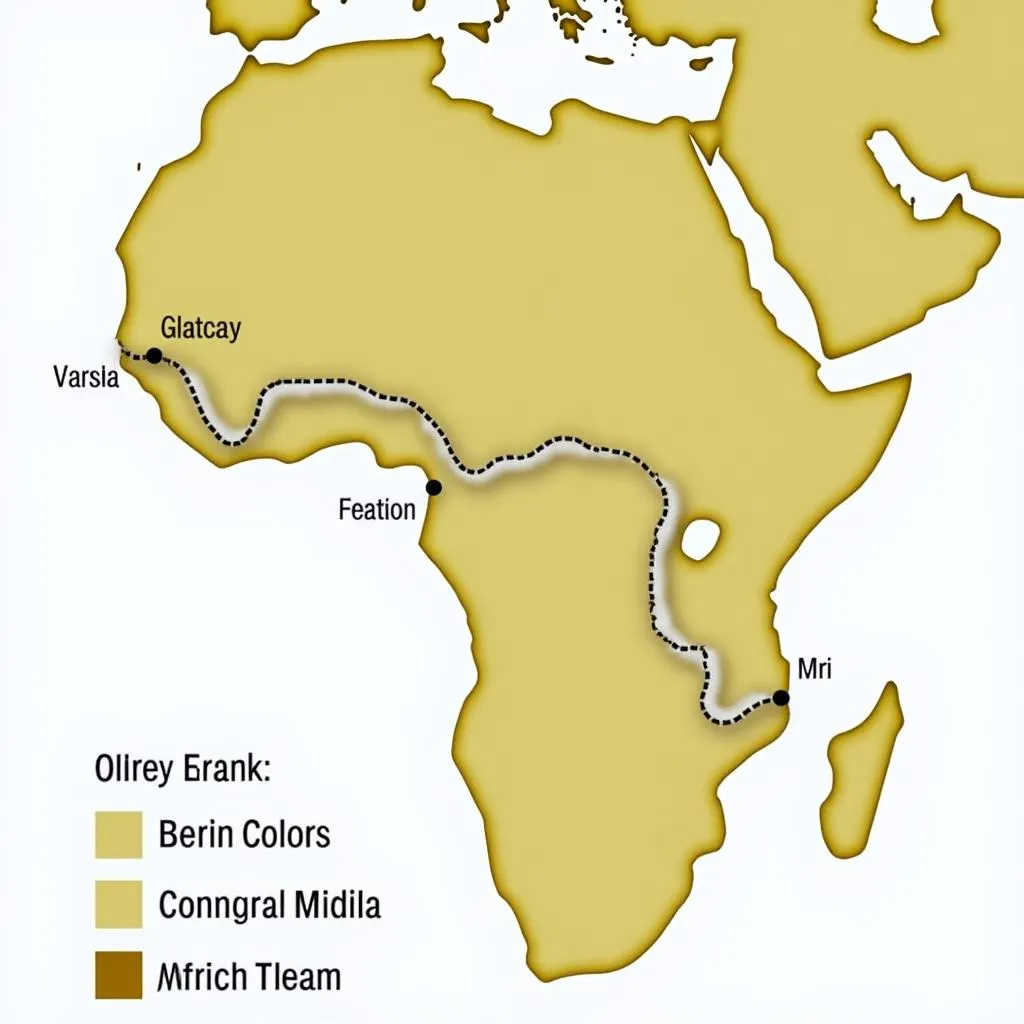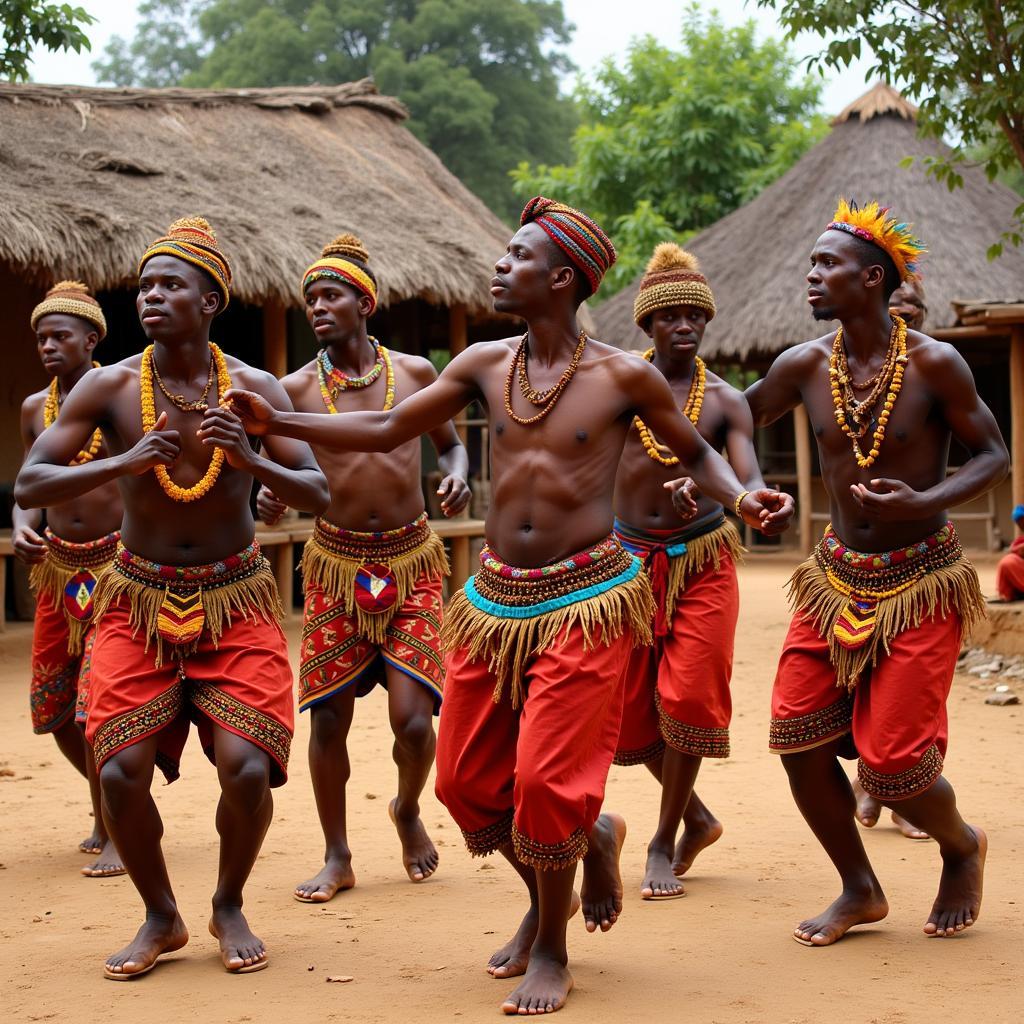African Elephant Migration Path: A Journey Across the Continent
The African Elephant Migration Path is a captivating natural phenomenon that draws attention from all over the world. Every year, millions of elephants embark on a journey across vast distances, driven by the search for food and water. This incredible spectacle showcases the resilience and intelligence of these magnificent creatures, offering us a glimpse into the intricate balance of the African ecosystem.
Understanding the Migration
The African elephant migration is not a single, unified movement. Instead, it’s a complex tapestry of smaller migrations that occur across different regions. These movements are influenced by various factors, including:
- Seasonal rainfall patterns: Elephants often follow the rains, moving to areas where lush vegetation and water sources are abundant.
- Food availability: As food becomes scarce in one area, elephants will migrate to regions with more plentiful resources.
- Predator avoidance: Migration can sometimes serve as a tactic to avoid predators, particularly during vulnerable periods like calving.
Key Migration Routes
The Great Elephant Migration in East Africa:
This is perhaps the most renowned elephant migration, spanning across the Serengeti National Park in Tanzania and Masai Mara National Reserve in Kenya. During the dry season, elephants gather in the Serengeti’s southern plains, seeking refuge near permanent water sources. As the rains arrive, they embark on a northward journey towards the Masai Mara, following the lush grasslands and fresh water.
The Okavango Delta in Botswana:
The Okavango Delta is a unique ecosystem characterized by its seasonal flooding. Elephants congregate in the delta’s flooded plains during the wet season, feasting on the abundant vegetation. As the waters recede, they migrate towards the drier surrounding areas.
The Chobe National Park in Botswana:
Chobe National Park is renowned for its large elephant population and its iconic riverine habitat. Elephants often migrate between the river’s floodplain and the surrounding savannas, following the seasonal variations in water and food availability.
Threats to the Migration
Despite their resilience, African elephant migrations face significant threats, including:
- Habitat loss: Human encroachment through agriculture, urbanization, and infrastructure development has fragmented elephant habitats, disrupting their natural migratory routes.
- Poaching: The illegal trade in ivory continues to threaten elephant populations, reducing their numbers and impacting migration patterns.
- Climate change: Shifting rainfall patterns and droughts can disrupt food and water resources, making it challenging for elephants to sustain their migrations.
Preserving the Future
Protecting African elephant migrations is crucial for maintaining the health of the African ecosystem and ensuring the survival of these magnificent creatures. Efforts to conserve elephant populations and their habitats include:
- Establishing protected areas: National parks and reserves provide safe havens for elephants, enabling them to migrate without interference.
- Anti-poaching initiatives: Collaborative efforts between governments, conservation organizations, and local communities are crucial to combat the illegal ivory trade.
- Promoting sustainable land management practices: Encouraging sustainable agriculture and infrastructure development can help minimize the impact of human activity on elephant habitats.
“Preserving elephant migration is not just about protecting a single species; it’s about safeguarding the entire ecosystem that these animals sustain,” emphasizes Dr. Amani Salim, a renowned wildlife biologist. “Their movements play a crucial role in shaping the landscape, dispersing seeds, and maintaining biodiversity.”
FAQ
Q: How long do African elephant migrations last?
A: The duration of elephant migrations can vary depending on the region and environmental conditions. Some migrations may span a few months, while others can extend for several years.
Q: What are the key challenges facing elephant migrations?
A: Elephant migrations face various challenges, including habitat loss, poaching, and climate change. These threats can disrupt their natural movements and endanger their survival.
Q: How can I support elephant conservation?
A: You can support elephant conservation by donating to reputable organizations, raising awareness about the threats they face, and avoiding products made from ivory.
 African Elephant Migration Routes
African Elephant Migration Routes
Q: Are there any specific migration routes that are considered particularly important?
A: The Great Elephant Migration in East Africa is one of the most significant migrations, involving hundreds of thousands of elephants. It’s a crucial ecological process that contributes to the health of the Serengeti and Masai Mara ecosystems.
Q: What are the long-term implications of declining elephant populations on migration?
A: As elephant populations decline, their migrations are likely to become less frequent and less extensive, further disrupting the ecological balance of African ecosystems.
Q: How can I learn more about African elephant migrations?
A: You can find more information about elephant migrations through online resources, documentaries, and books. Visiting national parks and reserves where these migrations occur can provide firsthand insights into these fascinating journeys.


